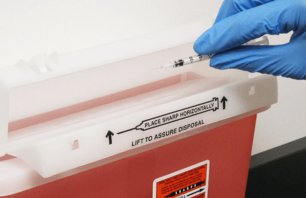Deconstructing OSHA’s Hazard Communication Standard
The Occupational Safety and Health Administration (OSHA) requires health care organizations to inform employees about any hazardous chemicals to which they may be exposed. The agency’s Hazard Communication Standard details what information needs to be communicated, when and to whom. Although lengthy, the standard can be distilled into five key areas.
1. Classification of Chemicals
OSHA establishes health and physical hazard classes for different chemicals and outlines specific criteria for each class. It is a requirement of the Standard that health care organizations maintain a list of the hazardous chemicals they have on site.
2. Labeling
Containers with hazardous chemicals are required to be properly labeled, including the following information that is required for manufacturers’ labels:
- The product identifier or name
- A signal word that underscores the threat, such as “danger” or “warning”
- A hazard statement that relates to the relevant hazard class and category
- Pictograms or symbols that convey health and physical information
- Precautionary statements that provide measures to minimize or prevent adverse effects
- Supplier information, including name, address and telephone number
While original product labels will come from the manufacturer or supplier, if chemicals are removed from the original, labeled container, organizations must create a workplace label and apply it to the secondary container.
3. Safety Data Sheets (SDS)
Safety Data Sheets (SDSs) communicate essential information about hazardous chemicals downstream from manufacturers, distributors, and importers to employers and users, answering questions such as:
- What is the chemical?
- What are the chemical’s properties and hazards?
- What protective measures and safety precautions are required?
- What handling and storage practices are needed?
- Other information required by the Standard
Organizations must have a SDS for each toxic chemical in their inventories and ensure the information is readily accessible in the work area for affected staff.
4. Written Hazard Communication Program
To comply with the standard, health care organizations should also have a written program that describes how it will communicate the safety risks and health issues associated with hazardous chemicals with employees. Organizations should update the program as needed to reflect regulatory changes and be sure it is readily accessible to staff.
5. Training
OSHA requires organizations to provide hazard communication training at two critical points:
- When a worker is initially assigned to a position where there is a potential for hazardous chemical exposure
- Whenever a new hazardous chemical, for which employees have not previously been trained, is introduced into the work area
Such training should address any hazards, how staff can protect themselves, how to access the hazard communication program, proper labeling elements and SDS format, and so on.
A Knowledgeable Partner Can Help Dig Deeper
Although the abovementioned points provide clarity, they only scratch the surface of the Hazard Communication Standard’s detail. To fully comply with OSHA’s rule, organizations must go further. Stericycle can help you take the next step. From guiding you toward the requirements that apply to your facility, to delivering robust training, Stericycle’s comprehensive program for helping you achieve and maintain OSHA compliance can set you on the path to success.



